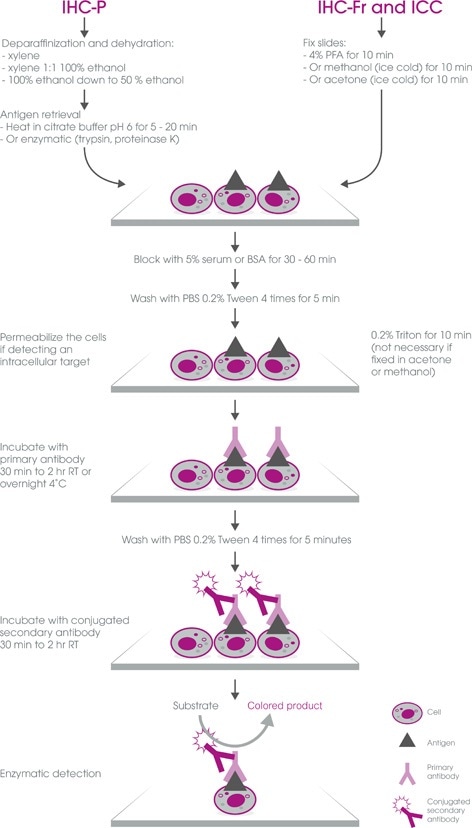Sponsored Content by AbcamFeb 5 2019
Immunohistochemistry (IHC) is based upon the specific detection of an antigen, using an antibody to recognize it and then staining the resulting complex. This is why it is also called immunostaining or immunodetection.
Selecting the Right Primary Antibody
A vital step in this procedure is choosing the right primary antibody. The appropriateness of the primary antibody is determined by the specificity with which it binds the target antigen.
Following this, binding the primary antibody is detected in one of two ways. Either directly, using a label conjugated to the primary antibody directly, or indirectly, using a secondary antibody which has already been labeled, to bind to the primary antibody which has formed a complex with the target antigen.
The secondary antibody can do this because it has been created to act against the host species, antibody type and subtype of the primary antibody. The detection is carried out through direct visualization of the fluorescent label, or by using an enzyme to act upon a soluble substrate, converting it into an insoluble chromogenic (color-generating) product.
Immunostaining Protocol
The following diagram illustrates a typical immunostaining protocol. When direct immunostaining is carried out, there is no need to incubate the primary antibody-antigen complex with the secondary antibody. When fluorescent labels are used, the last step, in which a soluble substrate is added, is left out.

 About Abcam
About Abcam
Abcam is a global life sciences company providing highly validated antibodies and other binders and assays to the research and clinical communities to help advance the understanding of biology and causes of disease.
Abcam’s mission is to serve life scientists to help them achieve their mission faster by listening to their needs, continuously innovating and improving and by giving them the tools, data and experience they want. Abcam’s ambition is to become the most influential life science company for researchers worldwide.
Sponsored Content Policy: News-Medical.net publishes articles and related content that may be derived from sources where we have existing commercial relationships, provided such content adds value to the core editorial ethos of News-Medical.Net which is to educate and inform site visitors interested in medical research, science, medical devices and treatments.